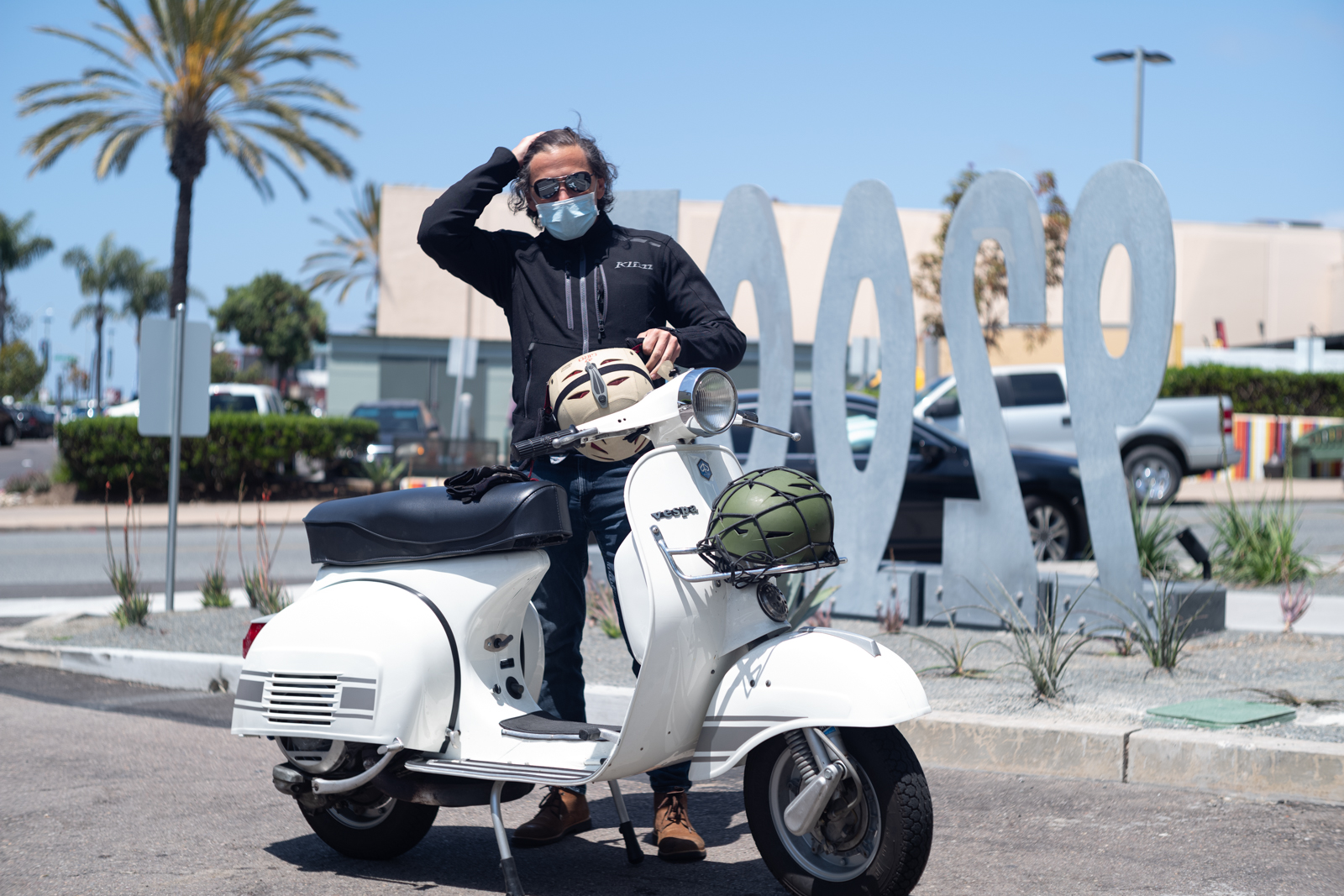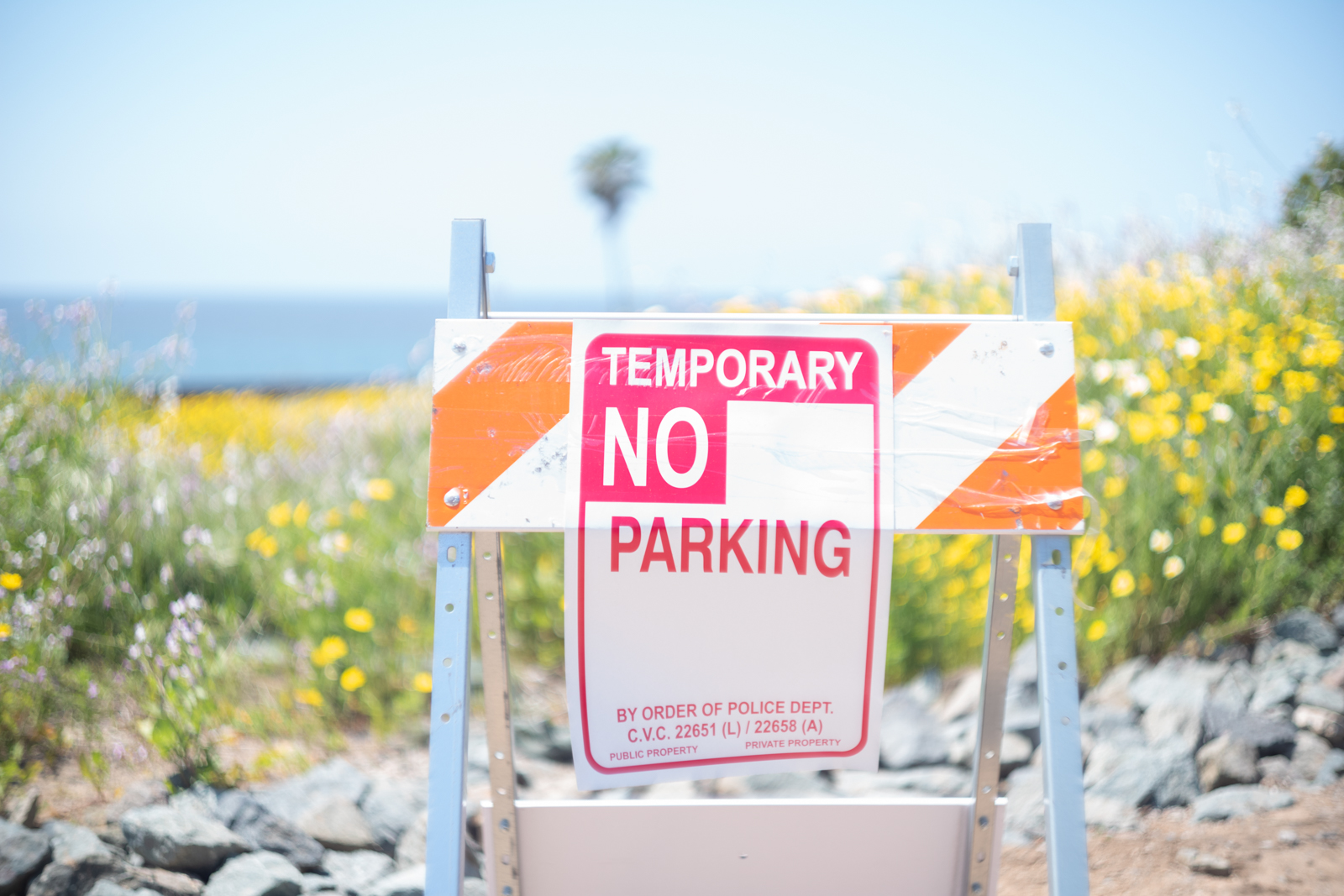In 1949 when the summarit 50mm f1.5 lens was introduced Leica (at the time the company was known as Leitz) sought to produce a fast 50mm lens. Leica, who at the time was more focused on designing camera bodies, licensed the lens design for this lens from a company called Taylor, Taylor and Hobson whose name is always mentioned in discussions of the summarit 50mm lens. This is why early versions will have the words “Taylor-Hobson patent” written on the front ring. This lens was manufactured until 1960 when it was replaced by the Summilux 50mm f1.4 Reference
The early versions were made with an LTM mount. Later versions used the Leica M mount. LTM lenses of variable condition are easy to find online and they are relatively inexpensive. The cost is, again, relative. We are talking Leica inexpensive. Even beat up versions carry a Leica premium. M-mount versions, although not rare, are more difficult to find. I waited several months to find one in good condition for this review. M mount versions of the Summarit 50mm f1.5, in any condition, are more expensive than their LTM counterparts.
In my situation, I spent the extra money because I find LTM/M39 adapters to be an annoyance and I needed my copy to be in as good a shape as possible because I was reviewing the lens for Leicalensesfornormalpeople.com. I didn’t want any cleaning marks, scratches, haze, or anything else skewing the results. My copy needed to be as perfect as possible without any interference from aging illness like cleaning marks and haze. What you are reading about in this review is an excellent+++ condition lens I purchased from The Leica Store in Miami. My decision was an expensive mistake you should consider avoiding. My experience with the Leica Store Miami, conversely, was first-rate.
Buying a lens that is this old, in this good of a condition, is an activity that should be reserved for collectors. My copy is pristine. As a result, I have anxiety taking it into the real world because I fear I will trash it. It is a hollow and wasteful feeling. Moreover, because of the performance characteristics (see below) this is a specialty lens that will only be used infrequently so dealing with the minor LTM adapter hassle would have been just fine. Knowing what I know now, age-related illness doesn’t cause the glow and flare associated with this lens. If I had it to do over again, I would have purchased a later model LTM lens with some age-related disease, saved a few hundred dollars and had no anxiety about beating it up a bit. I am clearly not a lens collector.
On garden gnomes and parked cars
What do you do with a kid who isn’t that smart, doesn’t have any athletic skill, and isn’t motivated to do anything? Do you beat the kid down and tell her she can’t compare with her peers in academics or athletics or do you grade them on a curve and focus on what makes them special. Obviously you judge them for who they are and not against the abilities of the other kids. That is what you need to do when you consider the usability of lenses that were made well over a half-century ago.
All of the ultra vintage lenses I have experience with have usability “issues.” Long focus throws, fiddly narrow aperture rings, collapsible barrels, and screw mounts are common. None of them are deal-breakers by any means. It would be silly to compare the usability of an ultra vintage lens to the usability of a modern lens. Technology has improved in the last 75 or so years. Moreover, some people find these “issues” charming just like some people like driving vintage cars without power steering, air conditioning, or motorized windows. If that is you, please consider these “issues” to be “features.”
For me, these qualities are potential problems that you should be aware of before you make a purchase. The long focus throw on this lens is a pain point but not a deal-breaker. I also don’t like the infinity focus lock because I am forever locking the stupid thing by accident. There is a reason why modern lenses do not have an infinity focus lock. All of that said, if I were a collector or someone who considered these “issues” to be “features” I would tell you that this is a beautiful lens that works flawlessly.
Does it have Soul?
If a little bit of soul is good, more is not always better. Along with many of the ultra vintage lenses I have used over the years, this lens is dripping with soul but beware! In the wrong situation, the soul might run you over like a chicken in the middle of the road. This is a specialty lens. This is a special effects lens.
The first stop on our discussion is glow. Some call it the Leica glow. When I see it, I think “Boom chicka wow wow” here comes our friend Michael Jackson again.
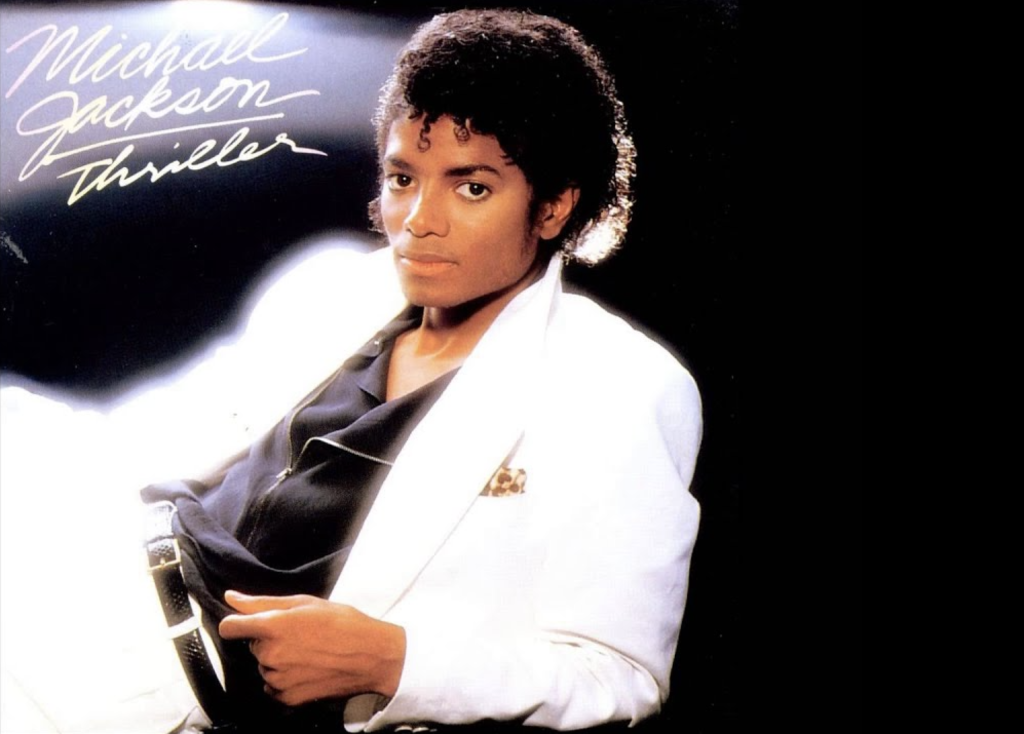
The Leica glow is real with the Summarit 50mm F1.5 lens. What I am referring to is the blooming of the highlights entire image when used at larger apertures in full sun. With my lens the glow is most noticeable between f1.5 and f2.8. This picture of Southern California scooter style demonstrates it well.
 If you value this look as being “dreamy” you need this lens. If you are looking for an 80’s glam portrait effect, and you shoot film, you can stop your research. Go get one. This lens is your soul mate.
If you value this look as being “dreamy” you need this lens. If you are looking for an 80’s glam portrait effect, and you shoot film, you can stop your research. Go get one. This lens is your soul mate.
Conversely, if “dreamy” is not quite the word you would use to describe the glow and/or you grew up in the 80’s and are still scarred by your cheesy high school glamour glow headshots, you should take a step back from this lens before you get burned.
I don’t fault anyone for liking the Leica glow. Leica glow is a matter of taste and if you like a little glow in your images, please ignore my irrational hatred of the Leica Glow, understand that I probably need therapy to understand why the Leica Glow brings back so many horrible childhood memories, and please, whatever you do, stop reading right now.
Question: can you tell the difference between the prior image of the man with scooter style and the following image? Be honest.
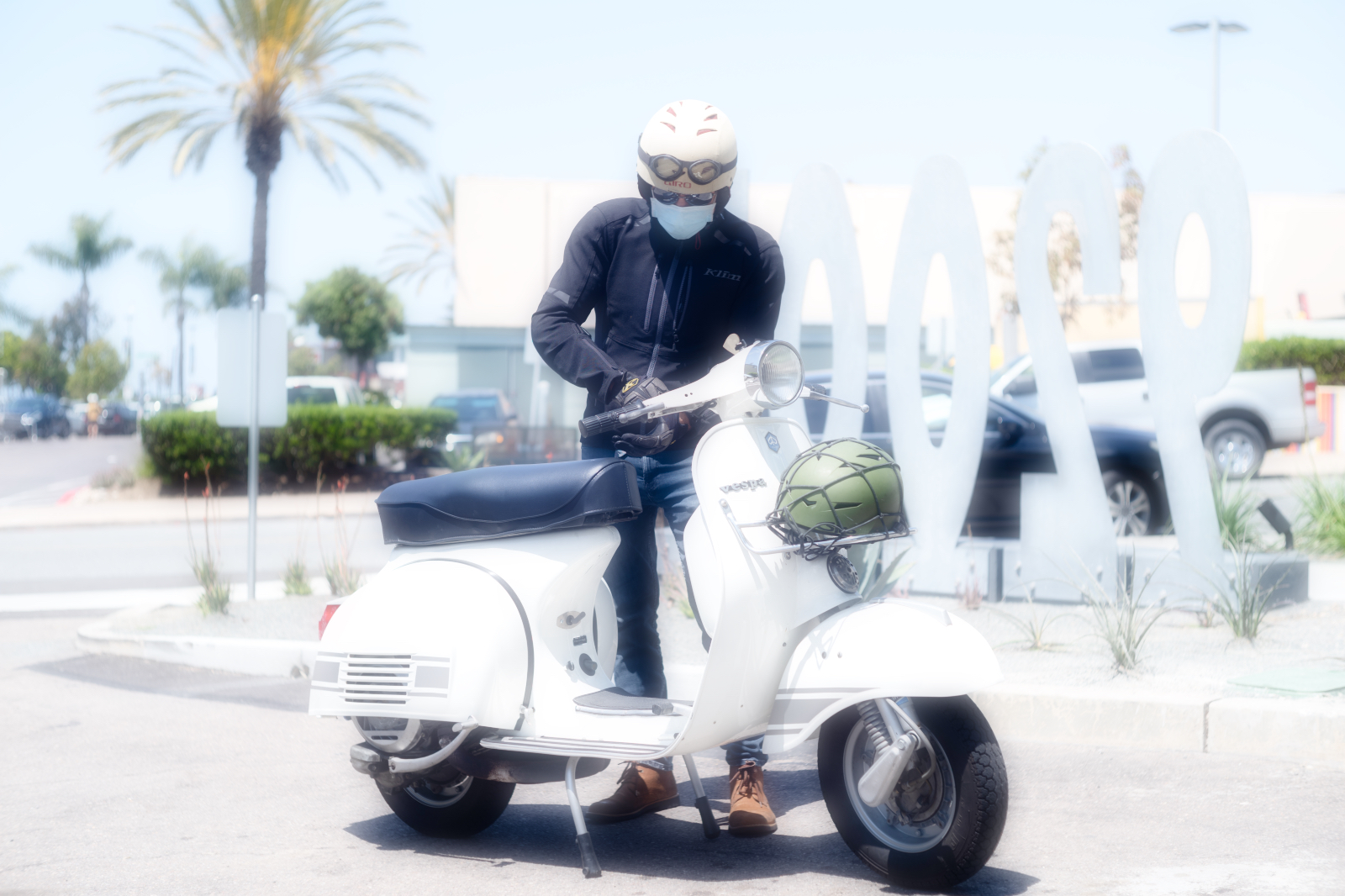
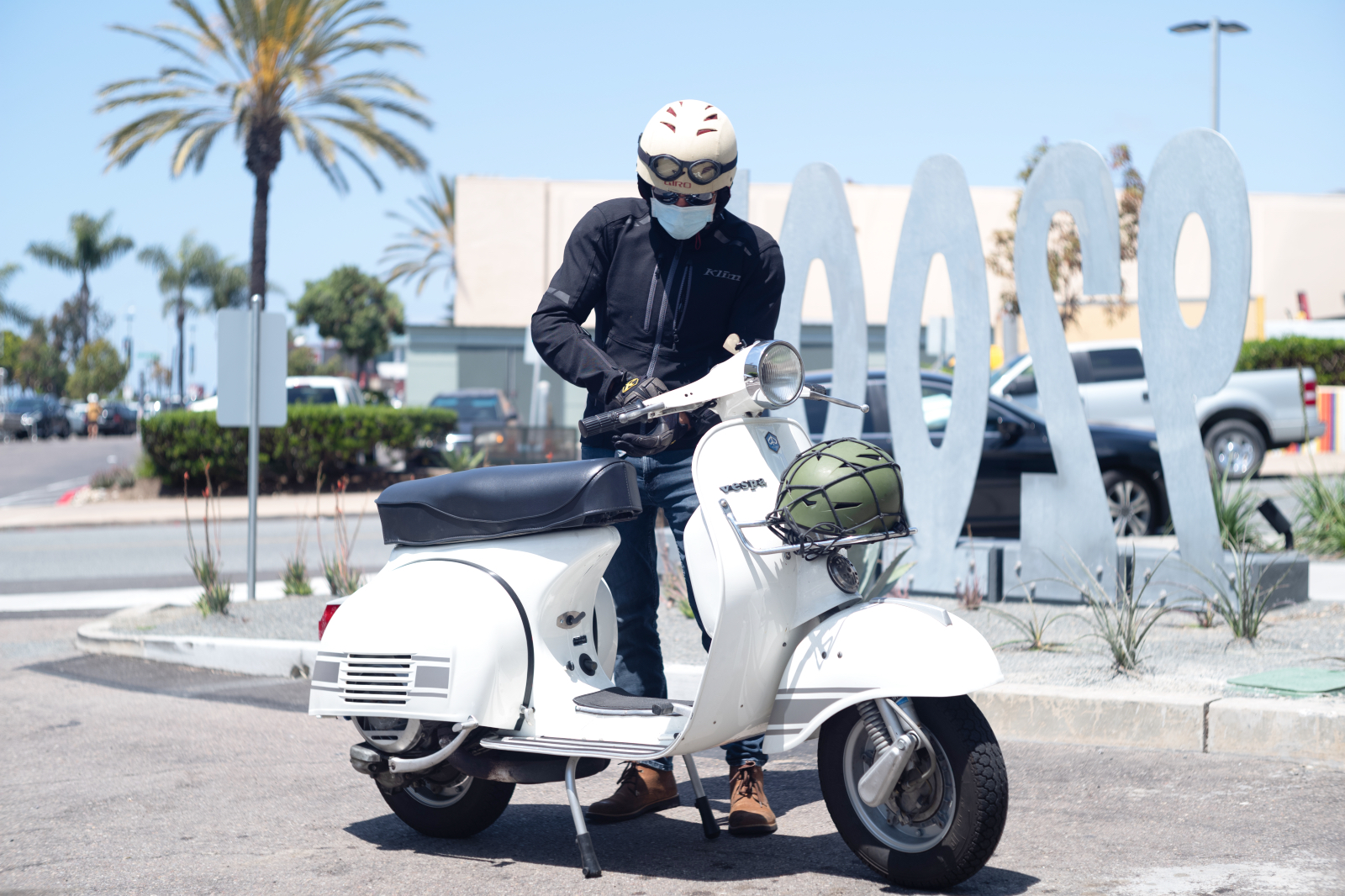
You know where this is going right? Where it is going is that the president of the Leica Fan Boy Club will soon be coming to come to my house and take away my Official Leica Fan Boy Club Card because I just committed a fundamental transgression by saying that I can simulate the image from a Leica lens in photoshop. There are rumors on the internet that people lost their club card for just thinking it and I just wrote it down. Gasp. I am surely a goner.
That second image was taken with the Summarit 50mm f1.5 lens at a higher aperture then run through the Luminar 4 glow filter. It isn’t perfect. It isn’t identical. It is, however, close enough to at least consider the possibility that glow is too easy to achieve in post-processing that purchasing a lens to obtain images with glow in camera might be a mistake. I prefer to have a lens I can use wide open and then apply the glow afterward rather than have to worry about it ruining a shot by when I don’t want it. If you are shooting film, this discussion might not apply to you. If you are shooting video and want a lens to give you a dreamy Leica Glow effect you should also ignore this recommendation.
Before we leave the topic of Leica glow, if you don’t understand my comments regarding the Leica Fan Boy club and my previous transgression, let me explain. In every YouTube comment and every forum post when someone is trashing Leica lenses and the people who enjoy using them, they invariably say “I can do the same thing in post.” On the one hand, I agree with them and they are correct. On the other hand, who wants to spend hours in photoshop making depth maps and playing around with blur filters to simulate bokeh, applying selective sharpening to simulate the so-called 3D-pop, and playing around with color toning to get some Soul back into the image? The Leica look can be approximated in photoshop but what a waste of your life? Moreover, it is not practical to do it on any sort of ongoing basis. Hopefully, this paragraph will allow me to keep my Leica Fan Boy club card a little longer.
Not to be outdone by glowing at wide apertures, the Leica Summarit 50mm f1.5 continued to deliver on its promise of being ultra vintage with its’ bokeh. The bokeh will make you smile or cry depending on your taste. I cried a little inside when I saw the bokeh.
When I started this website, I promised myself I would not focus too heavily on bokeh because I believe that there is way too much focus on bokeh in the photography community. In my experience, normal people looking at photographs don’t care too much about the background and don’t even notice what is going on there unless you ask them. Getting bogged down in things like onion ring bokeh, cat eye bokeh, bubble bokeh, and taking pictures of lights at night just to look at round blobs seems silly given that the people looking at your images don’t care or notice one way or the other. All of that is valid EXCEPT when the bokeh gets in the way. With the Leica Summarit 50mm f/1.5 the bokeh (sometimes) gets in the way and is distracting.
Some call it swirling bokeh. Some call it painterly. Some say the bokeh is busy. Some call it pig vomit bokeh. Actually, I am the only one who probably calls it pig vomit bokeh but I digress. Here is an example:
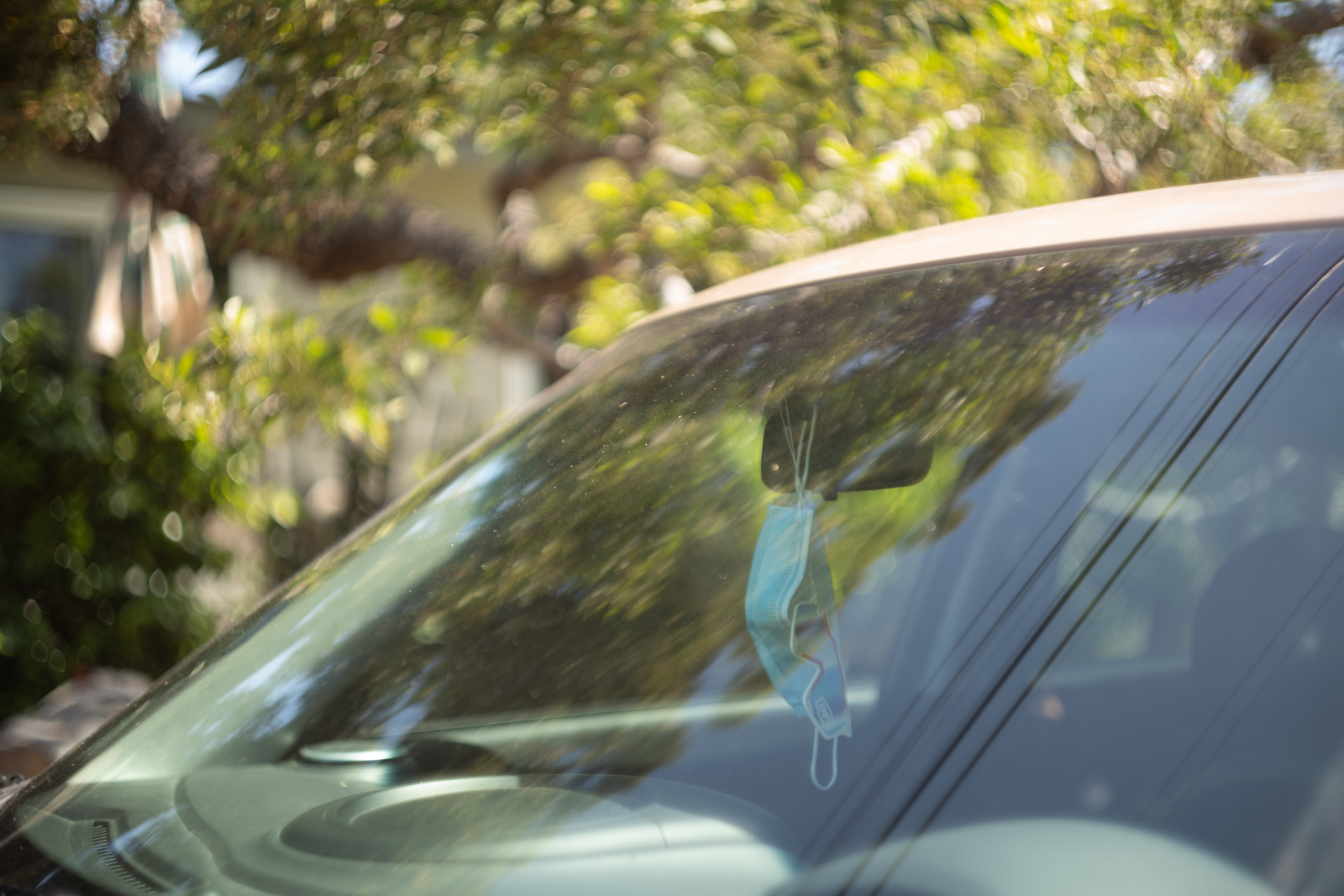 Pig vomit bokeh is the only bokeh that matters because it takes away from the image and is distracting. Other photographers love it and find it charming. To each their own. I don’t fault you for your taste and if you like it, please go out and buy this lens immediately. You will be happy as it offers one of the best examples of pig vomit, swirling, and painterly, bokeh I have seen. It is important to note, that pig vomit bokeh only occurs if the background is inherently busy. In other situations (see sample images below) the bokeh has a more pleasing appearance.
Pig vomit bokeh is the only bokeh that matters because it takes away from the image and is distracting. Other photographers love it and find it charming. To each their own. I don’t fault you for your taste and if you like it, please go out and buy this lens immediately. You will be happy as it offers one of the best examples of pig vomit, swirling, and painterly, bokeh I have seen. It is important to note, that pig vomit bokeh only occurs if the background is inherently busy. In other situations (see sample images below) the bokeh has a more pleasing appearance.
All, however, is not lost with this lens. If you don’t plan on shooting it wide open or you like the glow, you won’t be using it shooting into direct sun, and you are into pig vomit bokeh, you are going to freak out when you see what it does when it is stopped down. Frankly, it exudes everything you, I, and everyone else who is into vintage lenses and rangefinders could possibly ask for in a vintage lens. Low contrast, soothing, muted and vintage colors, and incredible center sharpness are the name of the game. It is the epitome of Soul. To reiterate, the images this lens produces (when stopped down) are ludicrously appealing if you are into the vintage look.
So did I keep it?
Despite the fact that ultra vintage lenses have their faults, and sometimes these faults get in the way, every rangefinder and mirrorless camera owner should have at least one vintage lens in their bag to use as a specialty lens. To learn more about which lenses I kept and which lenses I sold, learn from my experience, and to support this site, please check out my Leica Lenses for Normal People:The Recommended Lists.
Sample Images (#pandemiclife)


